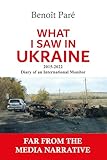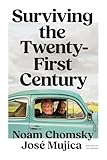9 April marked the 80th Anniversary of Hitler’s invasion of Denmark.
Of course, it never occurs to anyone to ask why Denmark and so many other countries are so preoccupied with war – monuments, anniversaries, museums, have so many bookshops with lots of books about war, war history, weapons, uniforms – use military-inspired fashion or drive city jeeps and other modern cars that look like armoured vehicles. Not to mention why there aren’t the same peace-inspired things – peace monuments, peace museums, bookshops with peace books…
The answer is simple enough. The West as a culture, as a social cosmology and a collective way of thinking and behaving, is a terrible violence-based apparatus of world wars, armament, colonialism, imperialism, occupations, genocide, nuclear weapons, global bases and intercontinental missiles – you name it.
It is a ‘civilisation’ so steeped in violence – political, economic, structural, gender, cultural, entertainment, psychological, racial – that most people take it for granted and don’t even realise the extent to which we are a culture of violence and not peace.
If the Danish government and parliament had been in favour of peace, in such a culture, they would have caused an outcry and heated public debate. But in a culture of war, they are completely politically correct – and Danes don’t see alternatives because politics, the media and research/experts are on the same war line. The same deadly groupthink – a concept that involves not thinking but following the herd in the delusional mood that you are right – simply cannot be wrong – and that everyone else is wrong.
Denmark does not have a MIMAK – a Military-Industrial-Media-
Interestingly, only one member of that committee has any relevant expertise; the rest – one must assume – know nothing special about international politics, defence theories, doctrines, security theories, threat analysis, etc., and I am quite sure that none of them can spell the word ‘peace.’
Nor do they need to. Today’s “peace” equals the ability to deter, to hate, to see threats around every corner, to arm without a target or purpose but as a percentage of GDP, to wage war – verbally (diplomacy no longer exists) and physically. We have Danish PM Mette Frederiksen’s word that peace can be more dangerous than war.
*****
8 April – Swedish Television, SVT, reports that Prime Minister Kristersson will call all the Swedish parliamentary parties for talks next week. The reason is this – ‘The government is now calling for new party leader talks on the continued rearmament of the Swedish defence. The background is the proposal for a loan-financed rearmament of SEK 300 billion, which the government and the Sweden Democrats have announced.’
They want to borrow SEK 300 billion – US$ 30 bn – to finance Sweden’s future rearmament, which comes on top of a rearmament that saw Sweden spend SEK 45 billion on its ‘defence’ ten years ago and today spending SEK 143 billion, an increase of 318%. More details on the Government Chancellery page – showing this development:
Sweden must rearm to satisfy the absurd, anti-intellectual and irrelevant yardstick: military spending as a percentage of GDP, which I have criticised to no end here. The planned rearmament has no – no – relation to any serious, qualified analysis of likely civil and military threats to Sweden in the coming decades. It suffices these days to state that Putin is the cause of all problems, that he is evil or that he is this or that personality and, therefore, to maintain out of the blue that he aims to take most of Europe. No one asks a question, because critical journalism has also disappeared, at least in this field.
This is how you lie and how you install and increase fear in the population. Fear – fearology – is known to be extremely effective in getting people to believe or do anything. Because ‘we’ are threatened!
But apart from this kakistocratic mindset, one should note that Swedish Prime Minister Kristersson is quoted as saying this:
‘In serious times, it’s important that we stick together as a country, says Prime Minister Ulf Kristersson.’
Is he afraid that Sweden will not stay together as a country? Is he afraid that the propaganda that ‘the Russians are coming’ will be seen through? Is he afraid that Sweden will not hold together when Swedes realise how destructive this insane militarisation – and borrowing for it – is for Swedes in the future? Is he afraid that at some point he’ll be seen as a peacetime traitor because his government is apparently more loyal to NATO and the US (even under the Trump regime!) than to the people who elected him?
I wonder if there’s something – deeper – in the thought I express in the headline of this article?
I fear that there is – and that this is a convincing sign of the West’s decay from within – while legitimising the chaos of inner emptiness by looking mad at external non-existent threats. Psychologists call this kind of psychology ‘projection’ – ‘projecting your own dark sides onto your opponent.’ I would call it psycho-political projection.
We – Western societies – simply have no vision of the future to rally around, so the illusory and self-created war must become the thing that makes us stand together and gives us meaning.
PS Much more can indeed be said about this hypothesis – militarism as filling the void of modern Western society, offering a meaning and cohesion, albeit absurd and dangerous. I intend to think more and write more about this, so any views you, dear reader, may have on this relationship, please drop them below. Thanks!












